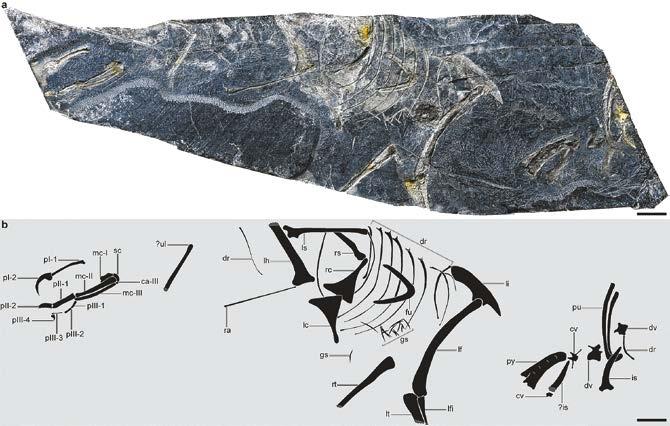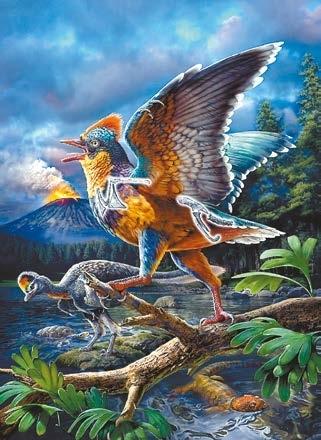

CHINESE scientists have unearthed the oldest short-tailed bird fossil, dating back about 150 million years, in East China’s Fujian Province. This suggests that birds might have originated earlier than previously thought. The fossilized bird Baminornis zhenghensis was discovered in Zhenghe County, Fujian Province. Its short tail ends in a compound bone called the pygostyle, a feature uniquely present in modern birds. This indicates that the body structure of modern birds emerged in the Late Jurassic Period, 20 million years earlier than previously known. The bird displays a unique combination of traits, including modern bird-like shoulder and pelvic girdles, as well as a non-avian dinosaurian-like hand, which is a very interesting and contradictory phenomenon, said Wang Min, a researcher with the Institute of Vertebrate Paleontology and Paleoanthropology (IVPP) under the Chinese Academy of Sciences (CAS), and the leading scientist of the research team. “This is a groundbreaking discovery. It overturns the previous situation that Archaeopteryx was the only bird found in the Jurassic Period,” said Zhou Zhonghe, an academician of CAS. Based on the new discovery, scientists speculate that the emergence of the earliest birds could be traced back to an even earlier time, possibly 172 million to 164 million years ago, according to Wang. The study, conducted by researchers from IVPP and the Fujian Institute of Geological Survey, was published in the latest issue of the journal Nature. While it is well established that birds evolved from dinosaurs, the timing of this transition has long been debated. Some studies suggest that birds’ earliest diversification occurred during the Jurassic Period, though the fossil record has been sparse and fragmentary. Archaeopteryx, often considered the earliest known and arguably the only Jurassic bird, has long been the focus of this debate. Although Archaeopteryx possessed feathered wings, it closely resembled non-avian dinosaurs, particularly due to its long, reptilian tail, which is in stark contrast to the short tails seen in modern birds. Recent research has even questioned whether Archaeopteryx should be classified as a bird, suggesting instead that it may be more closely related to the deinonychosaurs, a group of theropod dinosaurs. Scientists speculate that the Baminornis zhenghensis weighed around 100 grams, similar in size to a pet parrot, and lived in a swampy environment. The researchers employed multiple methods to determine the position of Baminornis zhenghensis in the evolutionary tree of birds. Their findings indicate that it is the earliest bird clade to diverge just after Archaeopteryx. At the same site, scientists found another fossil consisting only of a furcula, or wishbone. Geometric morphometric and phylogenetic analyses identified it as belonging to Ornithuromorpha, a group of birds from the Cretaceous Period. The fossils fill a gap in the early evolutionary history of birds, providing the strongest evidence yet that birds had begun to diversify by the end of the Jurassic Period, scientists said. (Xinhua) | 
